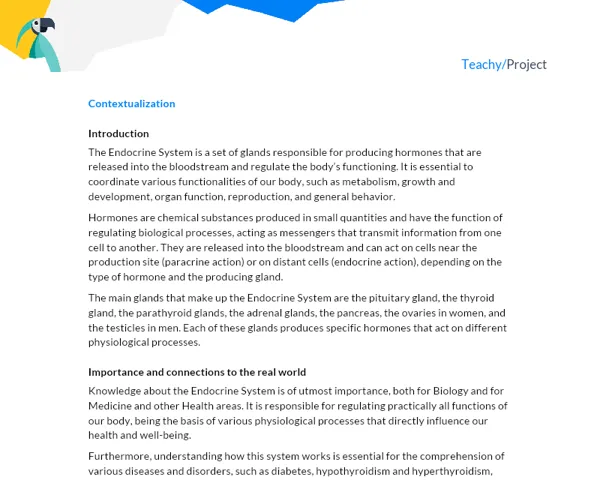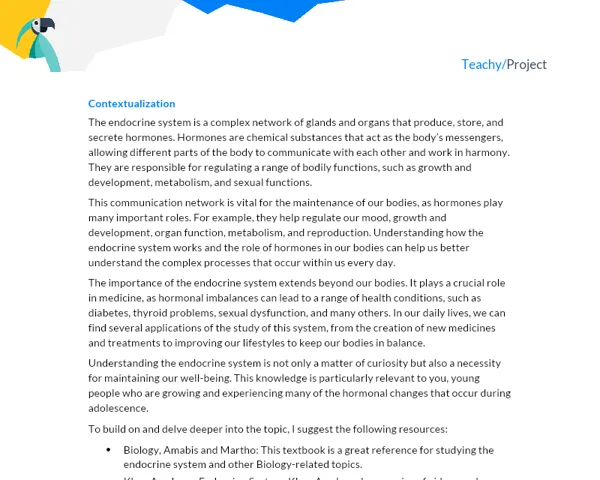Contextualization
Ecological pyramids are a graphical representation that helps us understand how ecosystems function and how energy and nutrients flow through them. They are divided into three types: pyramid of numbers, pyramid of biomass, and pyramid of energy. The pyramid of numbers demonstrates the relative number of organisms at each trophic level, while the pyramid of biomass shows the amount of biomass (mass of living organisms) at each level, and the pyramid of energy displays the energy available at each stage of the food chain.
There are many concepts and theories behind ecological pyramids that are fundamental to understanding Biology. The flow of energy and nutrients in an ecosystem, for example, is one of them. It is important to understand that energy flows from one trophic level to another through feeding and is lost in the form of heat during this process. Additionally, there is also the idea of trophic efficiency, which is the efficiency with which energy or biomass is transferred from one trophic level to the next.
The energy pyramid is the only one that always has a pyramid shape, while the others may have different shapes depending on the characteristics of the ecosystem. For example, in an ecosystem where there are few predators and many prey, the pyramid of numbers may be inverted.
Importance of studying ecological pyramids
Studying ecological pyramids is of utmost importance because they help us better understand how ecosystems function and how living organisms interact with each other. Furthermore, they are fundamental tools for the management of natural resources and for the conservation of biodiversity.
The increasing human interference in ecosystems has caused an imbalance in food chains and, consequently, in ecological pyramids. By understanding the pyramids, it becomes clear, for example, why the overexploitation of a natural resource can lead to the extinction of several species and cause ecological imbalance.
Each student can delve deeper into the concepts discussed here through the following resources:
- Book: Biology - Neil A. Campbell.
- Website: Khan Academy - Ecological Pyramids
- Video: Ecological Pyramids - Prof. Paulo Jubilut
Practical Activity: "Building Our Own Ecological Pyramid"
Project Objective
The objective of this project is to create a three-dimensional representation of an ecological pyramid, representing each trophic level with different colors and textures. In addition, students should explain the relevance of each level and how energy flows from one to another, as well as the impacts of possible disruptions caused by human activities.
Detailed Project Description
The project will be carried out in groups of 3 to 5 students and should last at least 12 hours of work per participant. It will be organized in two parts:
-
Research and Planning: Students should start by researching and discussing the different types of ecological pyramids and choose a specific ecosystem to base their pyramid on. Each group will need to detail the different trophic levels and the flow of energy and nutrients between them.
-
Construction and Analysis: Students will build a three-dimensional representation of the ecological pyramid, using different colors and textures to represent the different trophic levels. Additionally, students should analyze trophic efficiency and discuss the possible effects of a disturbance at one of the trophic levels, whether due to human actions or natural changes.
Required Materials
- Cardboard paper of various colors
- Scissors
- Glue
- Colored pens and pencils
- Internet access for research
Step by Step
-
Research: Each group should research a specific ecosystem and understand which organisms exist at each trophic level. Pay attention to the amount of energy transferred from one level to another and which factors can affect this transfer.
-
Planning: After the research, prepare a sketch of how the ecological pyramid will be represented. Decide which colors and textures will represent each trophic level and how energy will be represented.
-
Construction: Using the available materials, build a physical representation of the ecological pyramid. Make sure each trophic level is clearly visible and that the transfer of energy between them is represented.
-
Analysis: After building the pyramid, analyze trophic efficiency and discuss the possible effects of a disturbance at one of the trophic levels. Prepare a presentation of this analysis to share with the class.
Project Deliverables
-
Three-Dimensional Ecological Pyramid: A physical representation of an ecological pyramid, complete with details about each trophic level and the flow of energy.
-
Written Report: A detailed document that should include: Introduction (contextualizing the chosen ecosystem, relevance and real-world application), Development (explaining the theory behind ecological pyramids, the activity in detail, the methodology used, and the results obtained), Conclusions (summarizing the main points, explaining the learnings obtained, and drawing conclusions about the project), and Bibliography (indicating the sources used to work on the project such as books, websites, videos, etc).
-
Class Presentation: A presentation sharing the group's work, the ecosystem they researched, and the conclusions they drew. This will help reinforce communication skills, as well as support the learning of their peers.


